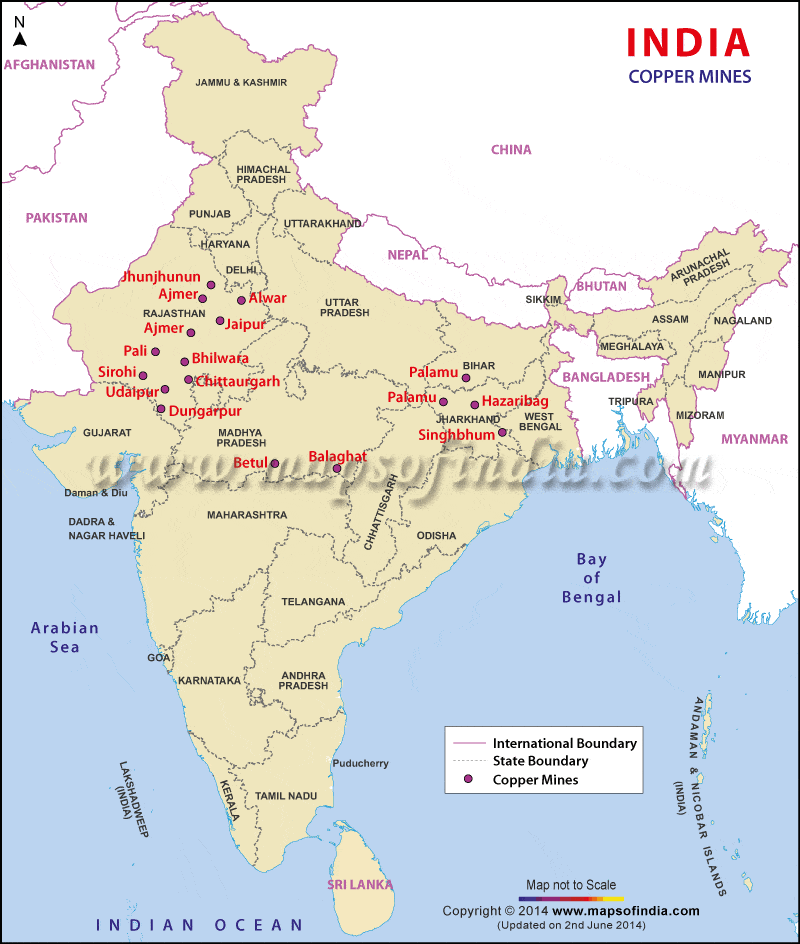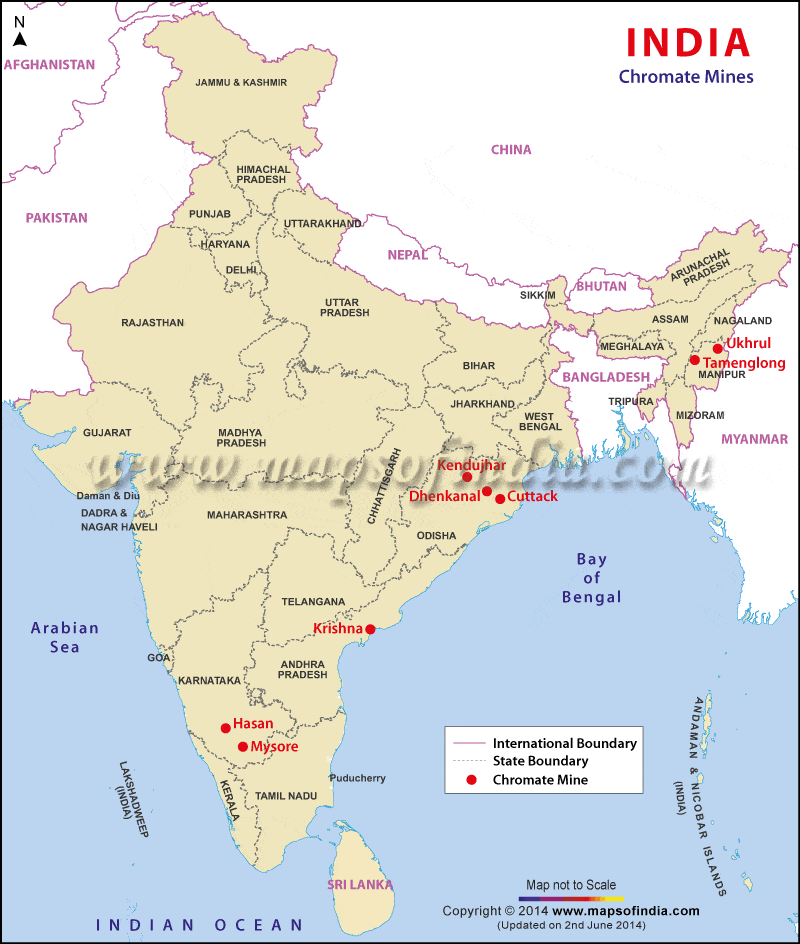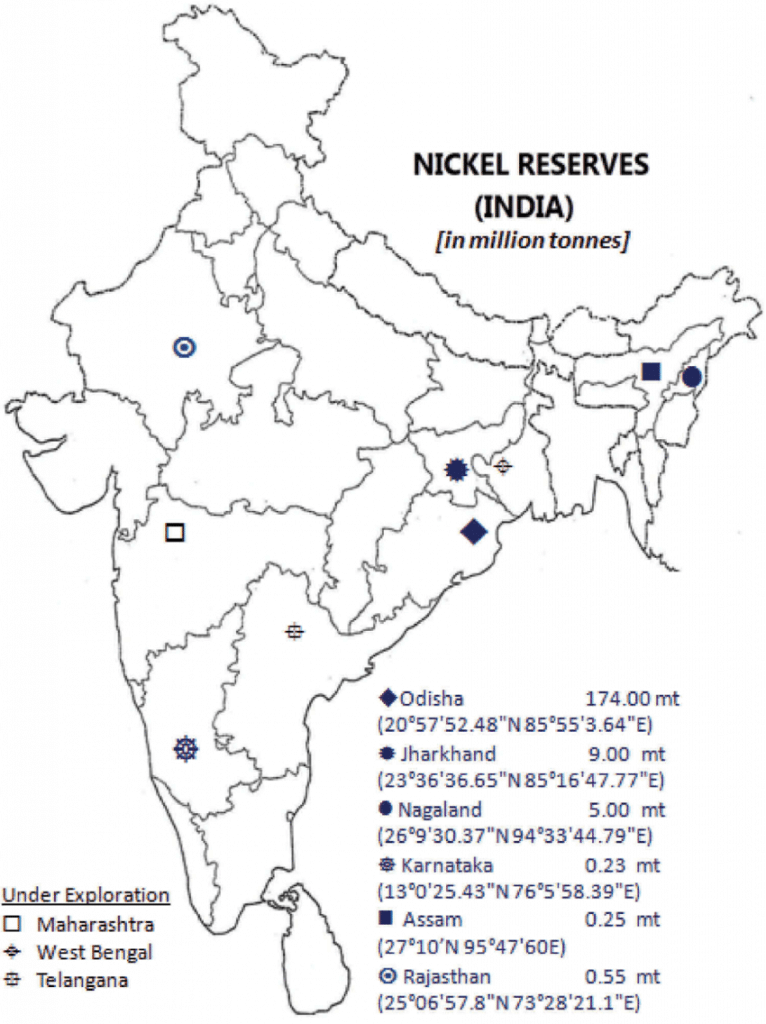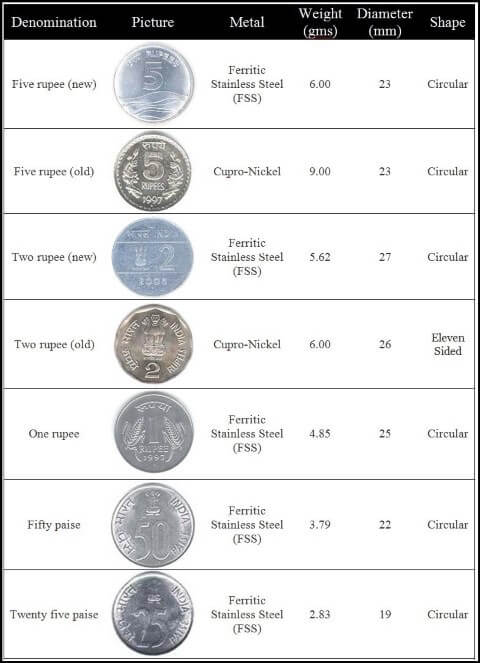In this article, You will read Copper, Nickel & Chromite Distribution in India – for UPSC IAS.
Copper
- Copper is a good conductor of electricity and is ductile (able to be drawn out into a thin wire).
- It is an important metal used by the automobile and defense industries, and in the electrical industry for making wires, electric motors, transformers, and generators.
- Alloyed with iron and nickel to make stainless steel.
- Alloyed with nickel to make ‘morel metal’.
- Alloyed with aluminium to make ‘duralumin’.
- When alloyed with zinc it is known as ‘brass’ and with tin as ‘bronze’.
- Copper ore is found in ancient as well as in younger rock formations and occurs as veins and as bedded deposits.
- Mining for copper is a costly and tedious affair because most of the copper ores contain a small percentage of metal.
- India is a poor country with regard to reserves and the production of copper. India has low grade copper ore (less than 1% metal content) (international average 2.5%).
- The major part of supply comes from the USA, Canada, Zimbabwe, Japan, and Mexico.
Copper Distribution in India
- India is not very lucky regarding reserves and the production of copper. Her total reserves in situ are estimated at about 712.5 million tonnes equivalent to 9.4 million tonnes of metal content.
- Major copper ore deposits are located in the Singhbhum district (Jharkhand), Balaghat district (Madhya Pradesh), and Jhunjhunu and Alwar districts (Rajasthan).

Madhya Pradesh–
- Madhya Pradesh has become the largest producer of copper in India surpassing Karnataka, Rajasthan, and Jharkhand in succession.
- The state is blessed with a fairly large belt in the Taregaon area, the Malanjkhand belt of the Balaghat district.
Rajasthan –
- Rajasthan has also progressed a lot with respect to the production of copper and is now the second-largest producing state in India accounting for over 40 percent of the total production of the country.
- The Khetri-Singhana belt in the Jhunjhunu district is the most important copper-producing area.
- Ajmer, Alwar, Bhilwara, Chittaurgarh, Dungarpur, Jaipur, Jhunjhunu, Pali, Sikar, Sirohi, and Udaipur are other copper producing areas.
Jharkhand –
- The main copper belt extends over a distance of 130 km.
- Singhbhum is the most important copper-producing district.
- Hasatu, Baraganda, Jaradih, Parasnath, Barkanath, etc. in Hazaribagh district;
- Bairakhi in the Santhal Parganas area and
- some parts of the Palamu and Gaya districts are also reported to have some deposits of copper ore.
Chromite
- Chromite (Cr) is the single commercially viable ore of chromium which is chemically known as iron chromium oxide.
- It is a steel-grey, lustrous, hard, and brittle metal which takes a high polish, resists tarnishing, and has a high melting point.
- The properties of chromium that make it most versatile and indispensable are its resistance to corrosion, oxidation, and wear.
- Chromium is an important alloying metal. It is used in the manufacture of alloys along with other metals, such as nickel, cobalt, copper, etc., and used in many other metallurgical, refractories, and chemical industries.
- Chromium imparts additional strength, hardness, and toughness to its alloys.
Chromite Ore Distribution In India
- Reserves of chromite in India are estimated at 203 MT.
- More than 93 percent of the resources are in ODISHA (Sukinda valley in Cuttack and Jajapur).
- Minor deposits are spread over Manipur, Nagaland, Karnataka, Jharkhand, Maharashtra, TN & AP.

Chromite in Odisha
- Odisha is the sole producer (99 percent) of chromite ore.
- Over 85 percent of the ore is of high grade [Keonjhar, Cuttack, and Dhenkanal].
Chromite in Other States
- Karnataka is the second-largest producer.
- The main production comes from Mysore and Hassan districts.
- Krishna district of Andhra Pradesh,
- Tamenglong and Ukhrul districts of Manipur are other producers.
Nickel
- Nickel is a lustrous, silvery-white metal having a high melting point.
- It exhibits high resistance to corrosion and oxidation, excellent strength, and toughness at high temperatures.
- Nickel is capable of being magnetized and readily alloys with many other metals.
- It is hard and has great tensile strength, Hence nickel steel is used for manufacturing armoured plates, bullet jackets
- When added in small quantity to iron, increases its properties manifold and makes the product hard and stainless.
- Owing to these qualities, nickel is used in a number of products for consumer, industrial, military, aerospace, marine, and architectural applications.
- Nickel has also been widely used in coins.
Health effects of nickel
- Nickel is a compound that occurs in the environment only at very low levels.
- Humans use nickel for many different applications. The most common application of nickel is the use as an ingredient of steal and other metal products.
- Humans may be exposed to nickel by breathing air, drinking water, eating food, or smoking cigarettes. Skin contact with nickel-contaminated soil or water may also result in nickel exposure.
- Foodstuffs naturally contain small amounts of nickel. Chocolate and fats are known to contain severely high quantities. Nickel uptake will boost when people eat large quantities of vegetables from polluted soils.
- Plants are known to accumulate nickel and as a result, the nickel uptake from vegetables will be eminent. Smokers have a higher nickel uptake through their lungs. Finally, nickel can be found in detergents.
- An uptake of too large quantities of nickel has the following consequences:
- Higher chances of development of lung cancer, nose cancer, larynx cancer, and prostate cancer
- Sickness and dizziness after exposure to nickel gas
- Lung embolism
- Respiratory failure
- Birth defects
- Asthma and chronic bronchitis
- Allergic reactions such as skin rashes, mainly from jewelry
- Heart disorders
Nickel Distribution In India
- Important occurrences of nickeliferous limonite are found in the Sukinda valley of Jajapur district, Odisha. Here it occurs as oxide.
- Nickel also occurs in sulphide form along with copper mineralization in the east Sighbhum district, Jharkhand.
- In addition, it is found associated with uranium deposits at Jaduguda, Jharkhand.
- Other important occurrences of nickel are in Karnataka, Kerala, and Rajasthan.
- Polymetallic sea nodules are another source of nickel.
- About 92 percent of resources are in Odisha.
- The remaining 8 percent of resources are distributed in Jharkhand, Nagaland, and Karnataka.



good crisp notes